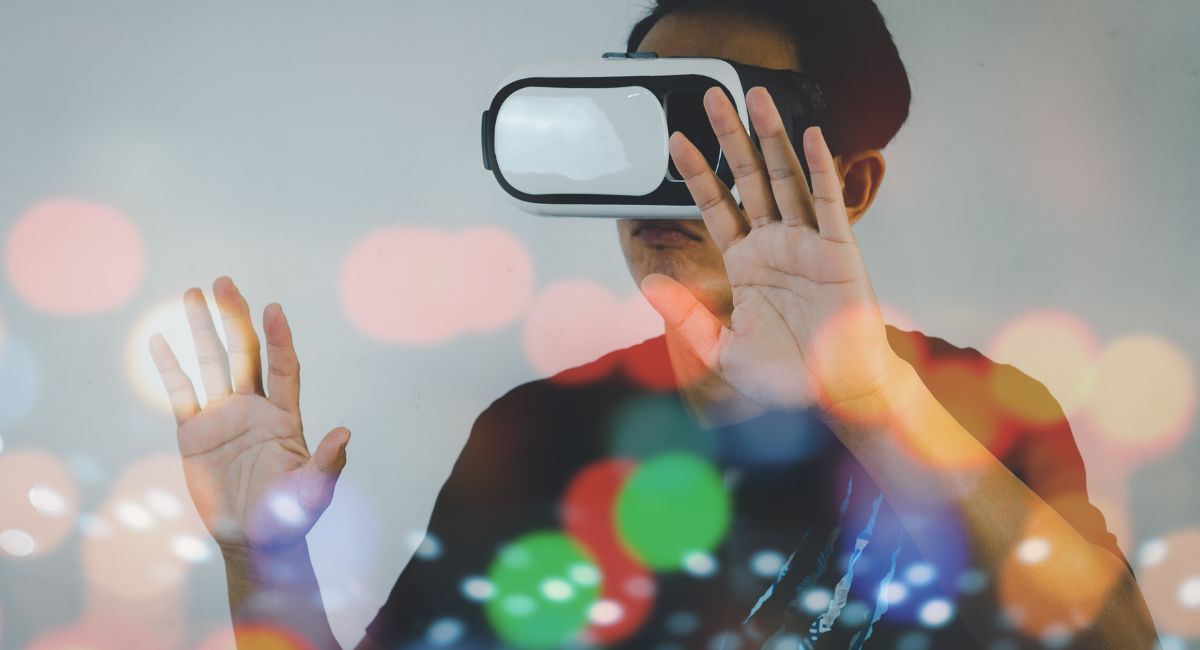The Growth Of Metaverse In The Coming Decade: Top 10 Technologies Involved
The metaverse is an emerging concept that describes a virtual world where people can interact with one another, access digital goods and services, and participate in a variety of experiences. Over the last few years, the metaverse has gained significant attention due to its potential to revolutionize how we live, work, and play. This article will explore the growth of metaverse in the coming decade and its potential impact on our lives.
- Increased adoption of virtual reality (VR) technology: One of the biggest factors driving the growth of the metaverse is the increasing adoption of VR technology. As VR technology becomes more accessible and affordable, more people will be able to experience the metaverse, leading to a broader user base and increased growth.
- Advancements in artificial intelligence (AI): The growth of the metaverse will also be supported by advancements in AI. AI-powered algorithms and systems will enable more realistic and immersive experiences in the metaverse, making it more appealing to users.
- Expansion of the digital economy: The digital economy is rapidly growing, and the metaverse is poised to play a significant role in its expansion. As more transactions occur within the metaverse, the demand for digital goods and services will increase, leading to a thriving digital economy.
- Emergence of new business models: The metaverse will also facilitate the emergence of new business models, such as virtual real estate, where users can purchase and develop virtual properties. This will create new opportunities for entrepreneurs and investors, leading to increased growth.
- Integration of blockchain technology: The integration of blockchain technology in the metaverse will also be a significant driver of its growth. Blockchain technology can be used to create secure and decentralized virtual economies, allowing for frictionless transactions and a more transparent economy.
- Growing demand for remote work and telecommuting: The COVID-19 pandemic has led to a surge in remote work and telecommuting, and this trend is likely to continue in the coming years. The metaverse can provide a virtual workspace for remote workers, enabling collaboration and communication in a virtual environment.
- Expansion of gaming and entertainment: Gaming and entertainment will be a key driver of the growth of the metaverse. As more people adopt VR technology, they will have access to immersive gaming and entertainment experiences, creating a larger market for these industries.
- Socialization and community building: The metaverse also has the potential to provide a space for socialization and community building. Users can interact with one another in a virtual environment, leading to the formation of new communities and relationships.
- Educational opportunities: The metaverse can also provide new educational opportunities, such as virtual classrooms and simulations. This can create a more engaging and immersive learning experience, leading to increased growth in the education sector.
- Potential for innovation: Finally, the metaverse has the potential to foster innovation in a variety of industries, leading to new products, services, and business models.
Also, read – Metaverse Technology For Development: Top 10 Sectors And Benefits Of Using Metaverse
Top 10 technologies involved in the growth of Metaverse
The concept of a Metaverse, a virtual world where individuals can interact with each other in a shared space, has been around for many years. However, recent advancements in technology have brought us closer to making the Metaverse a reality. In this article, we will explore the top 10 technologies that are driving the growth of the Metaverse.
- Virtual and Augmented Reality (VR/AR): The use of VR and AR technology is a crucial component in the creation of a Metaverse. This technology allows users to immerse themselves in a virtual world and interact with it as if they were in a physical space.
- Blockchain Technology: Blockchain technology enables secure, decentralized transactions in the Metaverse. This technology allows users to own and trade virtual assets in a safe and secure environment.
- Cloud Computing: The use of cloud computing allows for the creation of complex virtual worlds that can be accessed from anywhere in the world. This technology also enables the development of shared virtual spaces where users can interact with each other in real-time.
- Artificial Intelligence (AI): AI technology is critical in creating intelligent virtual agents that can interact with users in the Metaverse. These agents can provide a more personalized experience for users and help guide them through the virtual world.
- Internet of Things (IoT): The use of IoT technology allows for the creation of smart virtual environments that can be customized to suit individual users. This technology also enables the integration of physical and virtual spaces.
- 5G Technology: The use of 5G technology enables faster data transfer and lower latency, which is crucial in creating a seamless and immersive virtual experience for users.
- Machine Learning: Machine learning technology can be used to analyze user behavior in the Metaverse and provide a more personalized experience for users.
- Natural Language Processing (NLP): NLP technology can be used to enable virtual agents to understand and respond to user queries in a more natural and intuitive way.
- Computer Vision: Computer vision technology can be used to create more realistic virtual environments by allowing virtual cameras to capture and process visual data in real-time.
- Wearable Technology: The use of wearable technology, such as virtual reality headsets and haptic suits, can provide a more immersive and tactile experience for users in the Metaverse.
The growth of the Metaverse is being driven by a combination of technologies that enable the creation of immersive and interactive virtual environments. These technologies include VR/AR, blockchain, cloud computing, AI, IoT, 5G, machine learning, NLP, computer vision, and wearable technology. As these technologies continue to evolve and improve, we can expect the Metaverse to become an increasingly integral part of our lives in the coming years.
4️⃣ Metaverse Madness
With the largest tech companies on the planet getting involved, it’s clear that the Metaverse is here to stay
Join us & some of the leading MetaFi projects in #MetaverseMadness to stay on top of the latest trends with this cutting-edge technology pic.twitter.com/FfIfNPMq25
— BSC News (@BSCNews) November 6, 2022
In conclusion
The growth of the metaverse in the coming decade is poised to be significant, driven by advancements in technology, the expansion of the digital economy, and the emergence of new business models and opportunities. As more people adopt VR technology and the metaverse becomes more accessible and affordable, it will become an increasingly important part of our lives. The metaverse has the potential to revolutionize how we live, work, and play, leading to a more connected and immersive future.
Stay informed with daily updates from Blockchain Magazine on Google News. Click here to follow us and mark as favorite: [Blockchain Magazine on Google News].
Get Blockchain Insights In Inbox
Stay ahead of the curve with expert analysis and market updates.
latest from tech
Disclaimer: Any post shared by a third-party agency are sponsored and Blockchain Magazine has no views on any such posts. The views and opinions expressed in this post are those of the clients and do not necessarily reflect the official policy or position of Blockchain Magazine. The information provided in this post is for informational purposes only and should not be considered as financial, investment, or professional advice. Blockchain Magazine does not endorse or promote any specific products, services, or companies mentioned in this posts. Readers are encouraged to conduct their own research and consult with a qualified professional before making any financial decisions.

 Bitcoin
Bitcoin  Ethereum
Ethereum  XRP
XRP  Tether
Tether  Solana
Solana  Dogecoin
Dogecoin  USDC
USDC  Cardano
Cardano  Lido Staked Ether
Lido Staked Ether  TRON
TRON  Avalanche
Avalanche  Wrapped stETH
Wrapped stETH  Sui
Sui  Toncoin
Toncoin  Chainlink
Chainlink  Shiba Inu
Shiba Inu  Stellar
Stellar  Wrapped Bitcoin
Wrapped Bitcoin  Hedera
Hedera  Polkadot
Polkadot  WETH
WETH  Bitcoin Cash
Bitcoin Cash  Uniswap
Uniswap  Pepe
Pepe  Litecoin
Litecoin  LEO Token
LEO Token  Hyperliquid
Hyperliquid  Wrapped eETH
Wrapped eETH  NEAR Protocol
NEAR Protocol  Internet Computer
Internet Computer  Ethena USDe
Ethena USDe  USDS
USDS  Aptos
Aptos  Aave
Aave  Mantle
Mantle  Bittensor
Bittensor  Cronos
Cronos  POL (ex-MATIC)
POL (ex-MATIC)  Ethereum Classic
Ethereum Classic  Virtuals Protocol
Virtuals Protocol  Render
Render  Tokenize Xchange
Tokenize Xchange  Artificial Superintelligence Alliance
Artificial Superintelligence Alliance  MANTRA
MANTRA  Ethena
Ethena  Monero
Monero  WhiteBIT Coin
WhiteBIT Coin 



